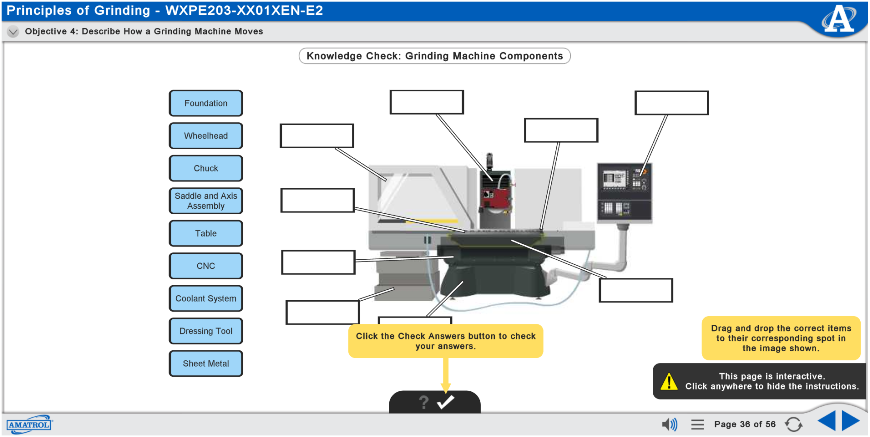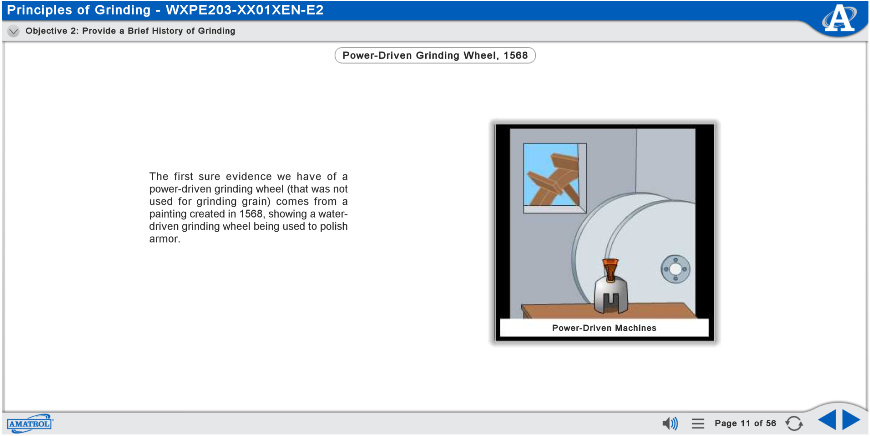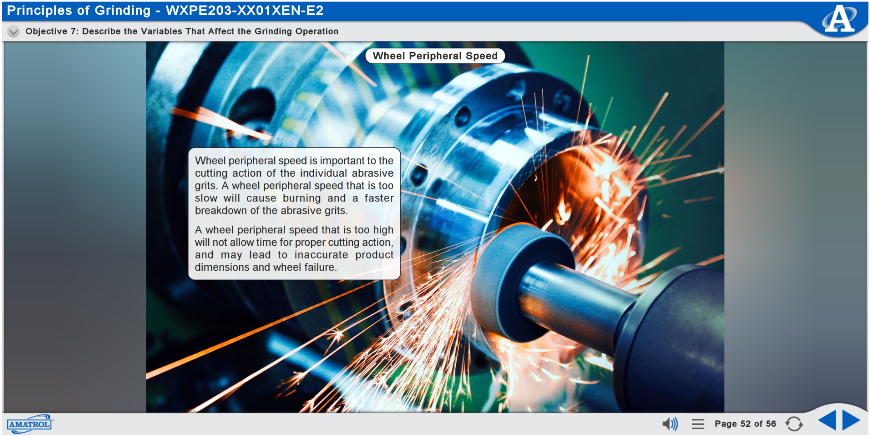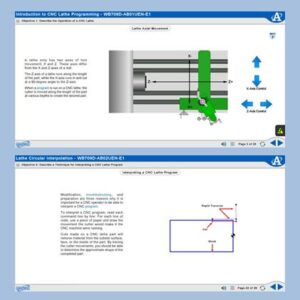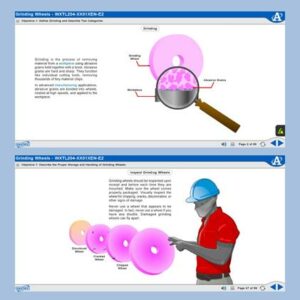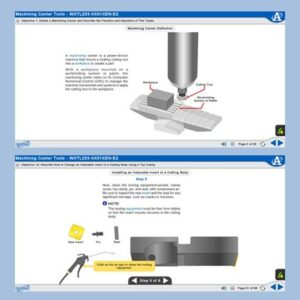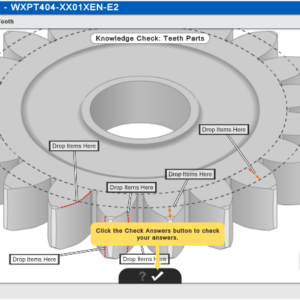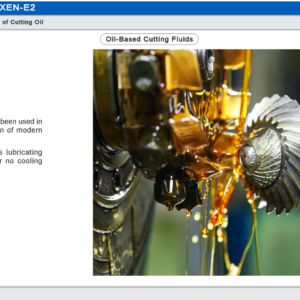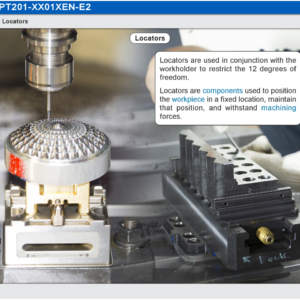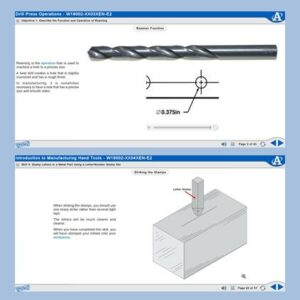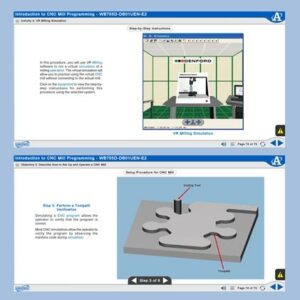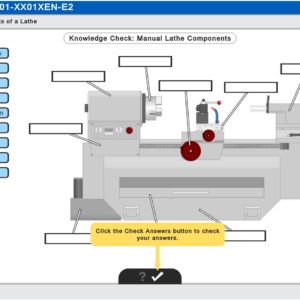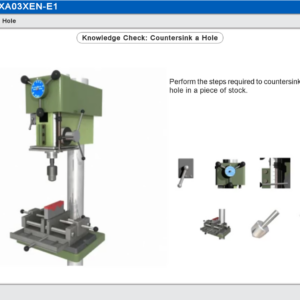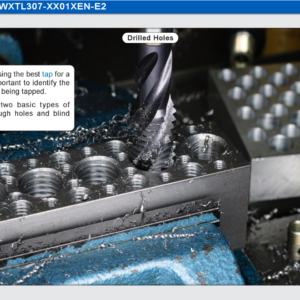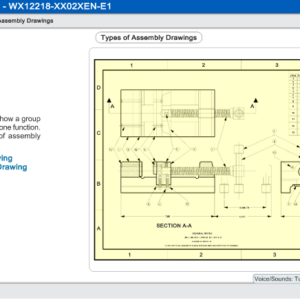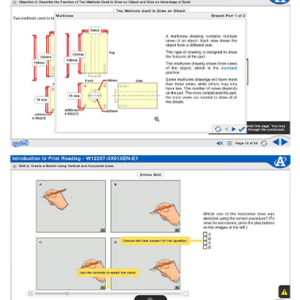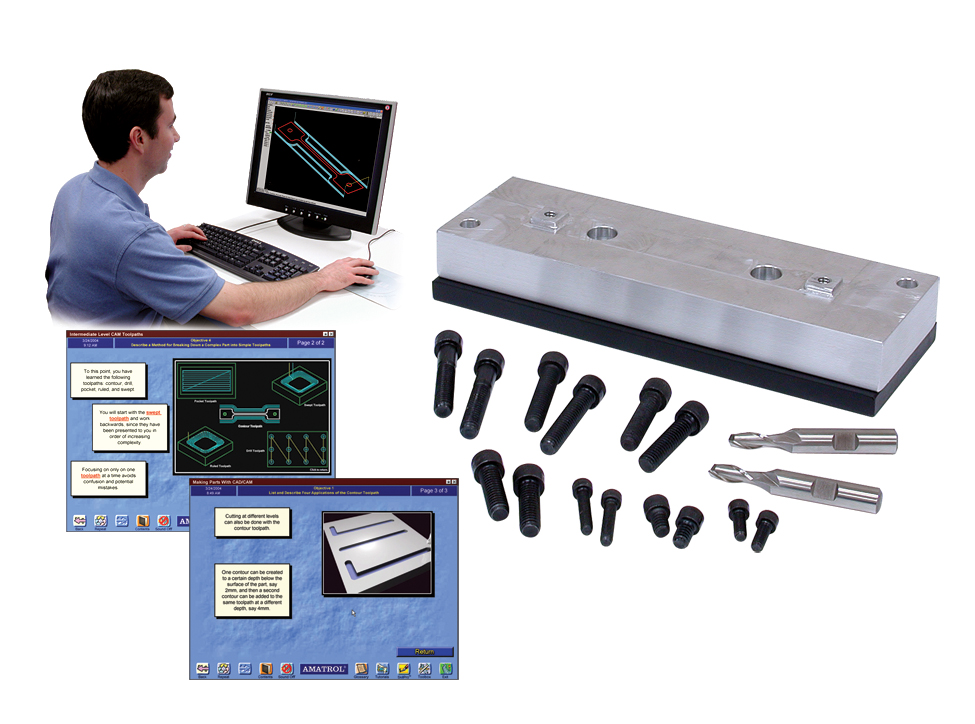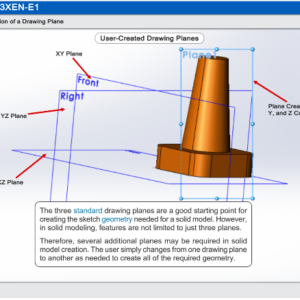Amatrol’s Principles of Grinding eLearning provides an overview of grinding equipment and machining applications utilized within the grinding process. This machining training course covers the history of grinding machines, major components of grinding machines, major types of grinding machines, common grinding operations, and variables that affect the grinding operation.
- HOME
- PRODUCTS
- eLearning
- Hands-On Workstations
- Assessment Systems
- Skill Boss Manufacturing
- Skill Boss Logistics
- High School Learning Programs
- College Learning Programs
- Industry Training Programs
- Industrial Certification Preparation
- Portable Training Systems
- Product Catalogs | Family of Companies
- eBooks
- FaultPro | Electronic Fault Insertion & Troubleshooting System
- Virtual Simulators
- Student Reference Guides
- Furniture
- PRODUCT CATEGORIES
- INSTRUCTOR TRAINING
- SUPPORT
- FAQ
- NEWS & MEDIA
- COMPANY


